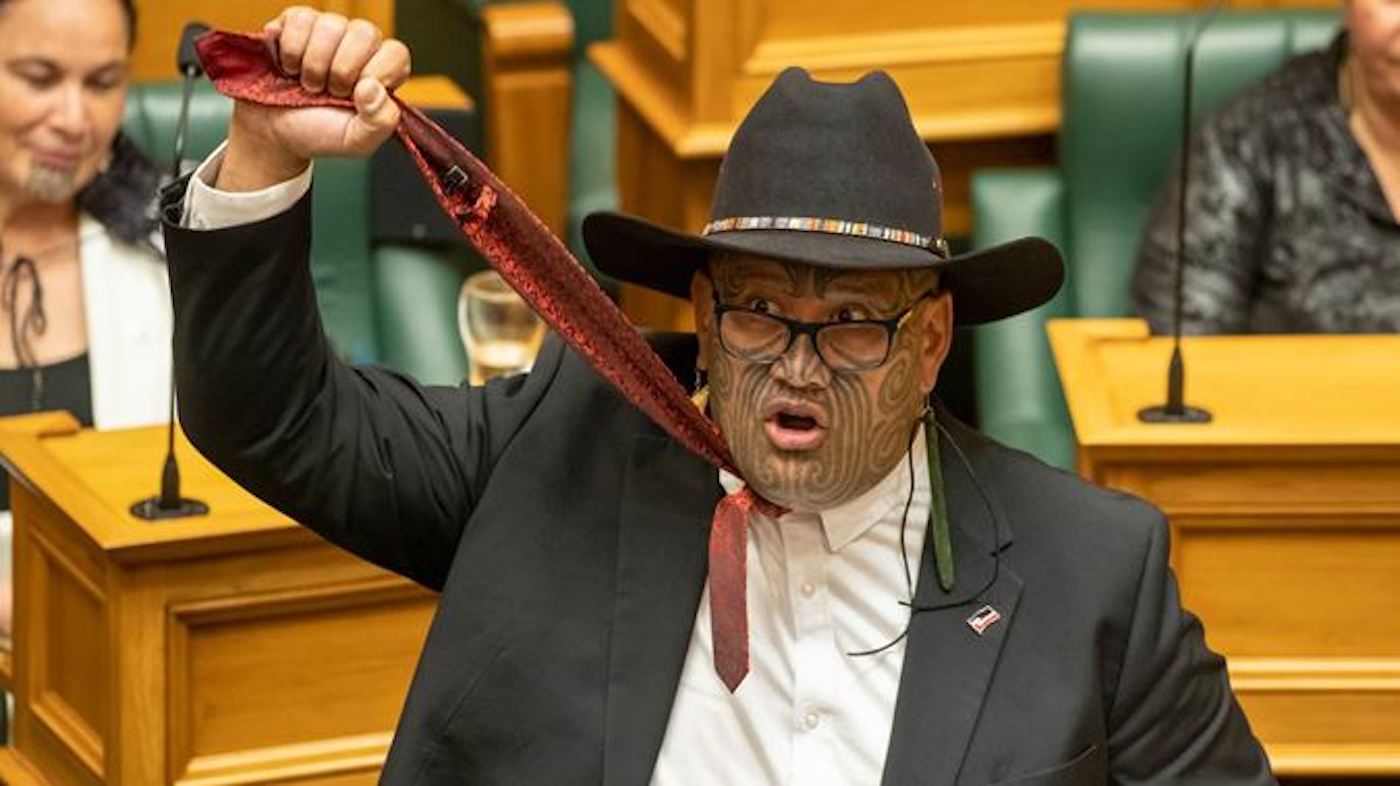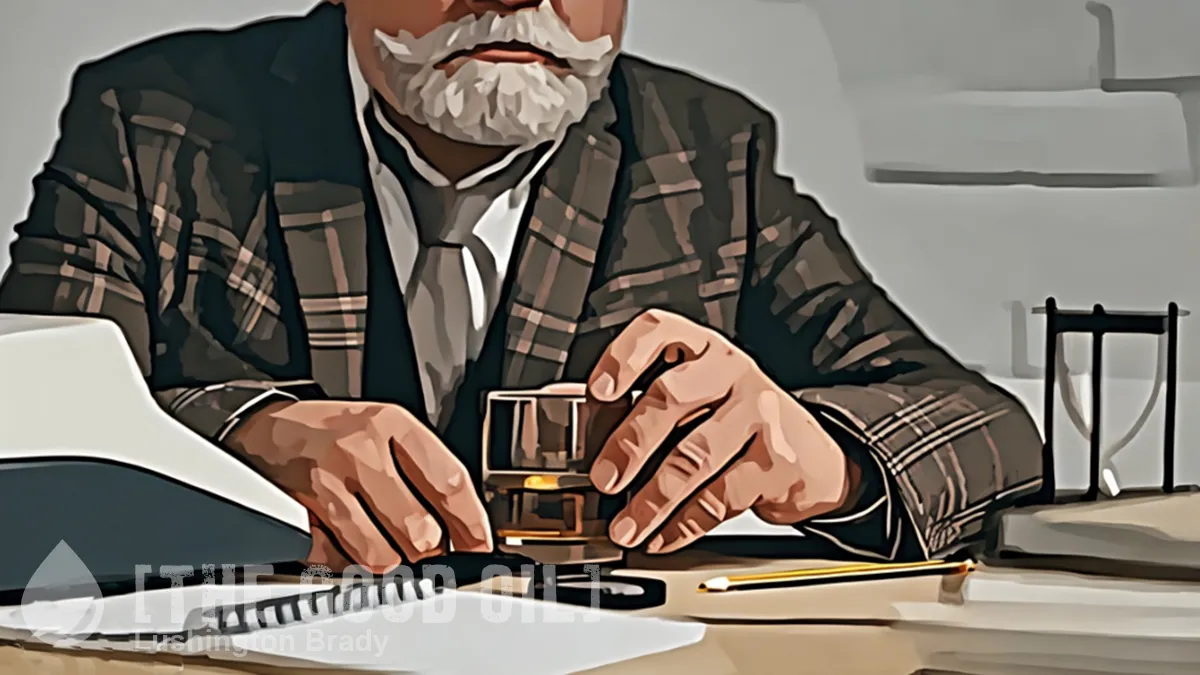How long will it be before a kaumatua (respected male elder) or kuia (respected female elder) of exalted rangatira (chiefly) status in Maoridom will call on Maori Party MP Rawiri Waititi to stop making a mockery of what ought to be the kawa (accepted procedure) of our Parliament?
(Note to readers: As this column is also addressed directly to Mr Waititi, it contains words in Maori he will understand and which I have translated in brackets).
Kawa is and has long been, and quite rightly so, a revered aspect of taha Maori (things Maori) with protocols for behaviour on marae (courtyards) and in wharenui (meeting houses) deservedly commanding respect and observance, in spite of minor differences in practice between one iwi and another, or one marae and another.
Most are common and easily acceptable to everyone to whom they may apply.
- Waiting to be called on to a marae for the first time.
- The calling-on (karanga) and the response of the visitors (manuhiri) always being undertaken by women.
- For important visitors the challenge process involving the laying down of (usually) a twig as a wero (symbol), the uplifting of which by the visitors signalling that they come in peace.
- The removing of shoes before entry into a wharenui.
- Courtesies around speakers always facing their audience and not being interrupted by interjections other than possibly an occasional murmur of kia ora as a term of “hear, hear!”
- And the individual personal greeting of the hongi.
Non-Maori encountering these protocols of kawa for the first time often find them daunting, and are careful to ensure that they observe them to the letter. Those of us who have had more experience – and in my 30 years close association as a trustee and board member of a Maori college I attended many such powhiri (welcomes) and huihuinga (meetings) – have the comfort and satisfaction that derive from having learned to respect the discipline, order and orderliness that kawa provides.
It is extraordinarily liberating and quintessentially Kiwi to be helped by our Maori brothers and sisters to realise that they accept you as one of their own, the more so when you show that you are fully aware and accepting of their kawa and tikanga. Courtesy extended begets courtesy in return, and Maori do it with unique grace and sincerity that springs from their Polynesian ancestry, as I found in my seven years living in Samoa.
But kawa is not solely a Maori or Polynesian virtue. We non-Maori know it as “common courtesy”. And it should extend in all directions, and the higher the level the higher the motivation. In our New Zealand public environment, there is no higher level than the Chamber of our unicameral Parliament where the rules are set for how we live.
In our New Zealand Parliament in recent years, I can think immediately of three Maori MPs who were in varying degrees firebrands: Matiu Rata, Whetu Tirikatene-Sullivan and Hone Harawira, each unafraid to speak their minds in what they believed were the interests of their Maori people. But when speaking those minds in the Parliamentary Chamber they were always punctilious in their respect for the kawa of Parliament. Not only that, they were always appropriately dressed, including the design-capable Whetu who sublimated her colourful creative instincts to the conservatism she felt the kawa of the House merited.
Equally respectful of the kawa of the House were the pioneers of the Maori Party, ably led by Tariana Turia and Pita Sharples, who were able to win support for Maori interests by bringing to Parliamentary debates kaupapa (topics, objectives) and mana (personal respect) developed in years of korero (discussion) in hui (meetings).

So, my first question to Rawiri Waititi is: “just as you would never breach the kawa of a wharenui by entering wearing shoes of any kind, let alone gumboots, why do you insist on making a mockery of the kawa of Parliament by wearing in its debating Chamber not just a hat of any kind, but a Texan-style Stetson?”
My second question: what gives you the liberty you took in the Chamber last week to sully the legacy created by Dame Tariana and Sir Pita for your Party as a credibly mana-enhancing voice for Maori in Parliament by your staging a performance more suited to a circus ring?
And while you’re at it, Mr Waititi will you explain why your insistence on emphasising the word “indigenous” as pertaining to our Maori people dishonours the memory of your tupuna (ancestors) who bravely and determinedly sailed their waka from Hawaiiki south to the islands we now know as New Zealand to become our first settlers. If you don’t know the meaning of the word “indigenous”, don’t use it.
And also, while you’re at it, tell us where in the preambles or texts of any of the signed versions of the Treaty, the word “partner” (or “partnership”) appears?
And why, if Aotearoa is an ancient Maori name for all of New Zealand and not just the North Island, does it not appear in the Maori version, Te Tiriti, in which the country is named as Nu Tireni?
It is vitally important that all of us who have the privilege of calling New Zealand home (and what an immense privilege it is in a world emerging from the scourge of the Covid-19 pandemic!) understand and accept the extent to which our home is defined by its Maori dimension. For all the multiplicity of ethnic origins who settled New Zealand after the arrival of the Polynesians who were to become Maori thus transforming our country to what it is today, a multi-cultural society, it is the Maori dimension that sets us apart from other former colonies that have blossomed into self-governing multi-cultural states. That is why our Maori dimension must not just be celebrated, but also preserved and enhanced, as it is today by the numbers of young non-Maori choosing to learn te reo (as well as some not so young, like 92-year-old me).
But celebration and preservation cannot be allowed to become the extremism of separatism as proposed in the current government’s agenda of He Puapua. Virtually all of the Maori people I know don’t share the opinions of the minority of Maori extremists who insist that there is a treaty “partnership” that justifies a 50/50 system of co-governance. Yes, there are fields in which Maori achievement is not reaching the same level as non-Maori, and that should be an issue of grave concern for all of us. The solution is not “by Maori for Maori” but “by all of us for all of us”.
This is why, as a united nation of New Zealanders, we must put an end to this constant wrangling about the Treaty and what I am sorry to class as a drift toward racialism that is as unwelcome as it is unnecessary. Let’s get back to first principles by taking a considered look at how we collectively ask ourselves whether we are satisfied that the ideals first aired at Waitangi on 6 February 1840 are still applicable to this third decade of the 21st century, nearly 200 years on; and, if they are, how should they be expressed and implemented in modern terms that we can all agree on?
Before our Ministry of Education mandarins start trying to rewrite what sounds like it will be a controversial if not counterfactual version of 19th century New Zealand history, let’s start our kids and ourselves fully understanding the events which inspired the signing of the Treaty and the visions for the future that its signatories intended.
My suggestion is to launch the national conversation that Opposition Leader Judith Collins has been calling for, by assembling a group of eminent people who have put the hurly-burly of day-to-day political skirmish behind them, such as Sir Geoffrey Palmer, Jim Bolger, Helen Clark, and Winston Peters, together with Maori minds such as Sir Wira Gardiner, Dame Naida Glavish, Ngarimu Blair and John Tamihere; under the chairmanship of Sir Anand Satyanand to draft a set of Treaty Principles for us all to consider, discuss and eventually decide by a binding referendum.
Not a replacement of the original historic versions of the Treaty and Te Tiriti with their now admitted differences in perception and interpretation, but a single set of principles, saying the same thing in both languages, to become the means by which governance at all levels can be assured that in their decisions and actions they “honour the treaty”.
Please share this BFD article so others can discover The BFD.









